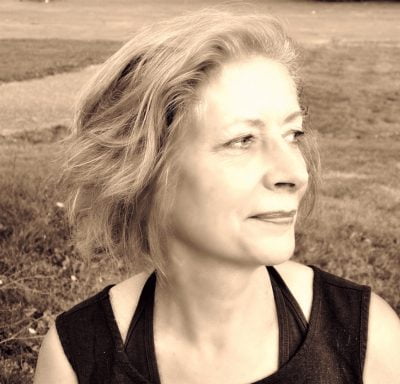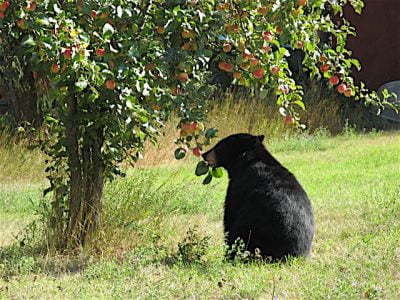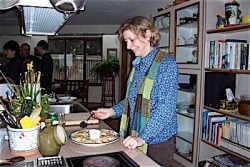#648 A glance of a thousand years
Paradise, Later Years
by Marion Quednau
Halfmoon Bay: Caitlin Press, 2018
$18.00 / 9781987915839
Reviewed by Renée Sarojini Saklikar
*
 Marion Quednau, from Gibsons, has won awards for both poetry and prose, including a Smithbooks-Books in Canada First Novel Award for The Butterfly Chair (1987). With Paradise, Later Years, she now debuts her first full-length collection of long poems, prose poems, and lyrics, which read as individual poems. Divided into four sections, “Holiday,” “Nuclear Family,” “When the Power Went Out,” and the eponymous “Paradise, Later Years,” Quednau writes in long lines that spill almost into the middle gutter of the book, creating a flow-sensation so that the entire work reads as a book-length poem. Kudos to Quesnau, her editors, and her publisher for releasing a book where every poem is long and lengthy in form and in theme.
Marion Quednau, from Gibsons, has won awards for both poetry and prose, including a Smithbooks-Books in Canada First Novel Award for The Butterfly Chair (1987). With Paradise, Later Years, she now debuts her first full-length collection of long poems, prose poems, and lyrics, which read as individual poems. Divided into four sections, “Holiday,” “Nuclear Family,” “When the Power Went Out,” and the eponymous “Paradise, Later Years,” Quednau writes in long lines that spill almost into the middle gutter of the book, creating a flow-sensation so that the entire work reads as a book-length poem. Kudos to Quesnau, her editors, and her publisher for releasing a book where every poem is long and lengthy in form and in theme.
Perhaps a useful entry point with long poems is to prepare for the reading journey with the book as an object. The cover of Paradise, Later Years is a blur of golden tones, vibrating across the page, the topmost part spliced with sky blue, creating an effect of a micro close-up of a photograph, perhaps depicting trees in autumn foliage, and designed by Caitlin’s publisher herself, Vici Johnstone.

Once we’ve held the book as object — turning it now this way, now another – we might turn to the end to get a sense of the author and her people. Quednau generously, as we might expect, and according to convention, thanks family, friends, and publisher, and several writers and poets one might be expected to know, in this, our ever-fractured house of CanLit.[1] She tells us later in the book (p. 112) that many of her colleagues and mentors “said the same thing in different ways: be bold in imagining, careful in craft.”
A third way of “getting ready” to read a long poem is to linger on the epigraphs, which can be way-finders and clues to the intentions of the author, her book, her sensibilities. What linkages might we discover once we’ve read a book and return to these front pieces? What creative tensions or commonalities might a poet evoke through her choice of epigraphs? Quednau shares two of them: one by Canadian poet Dennis Lee, the other by American writer Galway Kinnell, who is also cited in her acknowledgements. The first words of poetry that greet us are by Lee:
Tell the ones you love, you
love them;
tell them now.
The second epigraph, Kinnell’s, intrigued me more:
I can’t come back. I won’t change
I have the usual capacity for wanting
what may not even exist….
Satisfying in their strangeness, these lines promise intrigue and innovation.
*
“Sent to the Moon” is the book’s opening poem. Written in the second person, it encapsulates two points of view: a shadow authorial voice that may or may not be the author, and a layered voice that addresses the reader in italics, signalling, perhaps, that the words are something the speaker was told or heard once, in the form of a lingering rebuke:
You won’t get far
dressed like the Queen of Sheba, chasing after
the sun and the moon —
Slant advice
as you slammed the door, so crazy-brave
in your scrap of mini-skirt and kick-ass cowboy boots, halter of Thai silk
crossing your heart, and you hoping not to die, What Queen? What Sheba?
I admire the complexity of these first lines that use the breadth and depth of a longer line to good effect.[2] There’s a lot going on: different fonts, sayings, the speaker heading out the door, and that wonderful list of clothing, evoking a time and place.
“Sent to the Moon” provides a through-line of images and action based on an “Everywoman” who, perhaps from the 1960s to the present, either actually travels out the door into adventure and “the other side of the world” or, stuck in an unhappy marriage, imagines such action. The long lines show dexterity in taking on multiple themes and voices:
…– but imagine
you have long travelled in cahoots, unconsoled,
are newly sending signals
of sweet recognition, hearts torn
amid the broken contours of strip mall and suburb. Suppose
one wintered marriage had been enough—
ritual dance in the bedclothes, and urging
of children as fine measure
for providence. Imagine
that the news from East Timor…
or anywhere, once Burma or Bosnia, Rwanda, flamed-out….
The other poems in this first section, “Holiday,” too often seem as if they want to be short stories, or to present themselves as prose poems. For instance, in “Think about it,” Quednau writes:
as a flame-dousing firefighter
who loved me in the off-season
used to say, to get me all hot and bothered;
he was brash, bent on misbehaving, spent summers
in boot camps with rednecks hanging their girlfriends’ bras as faux shrines….
Now, I like the humour, the clear and accessible language, the rhythm and “go” of the first two lines. But it’s that cliché, “hot and bothered,” that seems to weigh down the line, as does “bent on misbehaving.” Somehow those phrases, and others like them in this five-page poem, make the line flabby with conversation. Maybe the tone and rhythm and diction would be better served by the prose poem, where the main unit of construction is the sentence?
In writing this mild criticism I wonder if another reader might read these lines and experience not only perfection but an evocation of other such memories to create a sense of pleasure? And maybe I’m wrong to flounder in such quibbles, because later in “Think about it” we read these lines:
I hate last-minute chocolate, it’s so passive-
aggressive, that lure of soft-centre, hard nougat,
cinnamon hearts, the lingering mouth burn
of the whole red bustier, garter getup
like I’m giving the keynote address to an AGM of men
who fear commitment, the room empty
’cause they’re all on the make for any soft-porn good sport
who doesn’t talk at all —
Yes! Wonderful, right?
Without typesetting, the lines on this screen as you read them won’t do justice to Quednau’s punch of sentence/phrase, which occurs in the middle of this poem. I loved the breathlessness of reading the lines in their long reach across the page. And reading that set of lines made me go back and read the entire poem again, and I’m still mulling it over. Give it a try. Let me know in the comments section what you think.
*
If we think of the loose-limbed poems in the “Holiday” section as streams gathering momentum, then the long lines start to gather speed and show energy and verve in the book’s second section, “Nuclear Family.”
 Of its six long poems, one stood out for me: “Tennessee Waltz.” First confession: I love the title, know the song, and immediately thought not only of the song, but the movie Primary Colours, with its haunting use of that melody by Ry Cooder.
Of its six long poems, one stood out for me: “Tennessee Waltz.” First confession: I love the title, know the song, and immediately thought not only of the song, but the movie Primary Colours, with its haunting use of that melody by Ry Cooder.
Can a title influence how readers interact with a poem? As soon as I saw it, I pulled open the book to the poem’s first line,
Call me romantic, a woman
who would wear a slant feather in her hat—
and nothing but a hat….
Quednau’s “Tennessee Waltz” is long poem as country-western, replete with a slightly anachronistic diction and lines that sometimes lose their force.
As a poet, I ruminate about line length and where to break a line. Quednau’s book gave me lots to think about. I’m reminded of what Kay Ryan, former American poet laureate, once said, to paraphrase here, “Edges are important sources of energy in a poem and edges are created by line breaks; the more breaks, the more energy.”[3] Perhaps Quednau’s poems might benefit from tighter line breaks; but then the beauty of length might be lost.
In the second stanza of “Tennessee Waltz,” Quednau provides line-length, line breaks, and diction integrated into a pleasing sensory whole:
Rebuffed and rebounded,
I’ve abandoned a few hangers-on, neatly called it off
when they were found too morosely
married, real sticks-in-the-mud —
The lines continue, adding up to a stanza about twenty lines long, depending on how you count the indentations. In addition to the strength of those opening verbs, with their “re” prefix and the way “rebounded” provides a slant rhyme to “abandoned,” I enjoyed the expanse of that stanza. Most stanzas in this section are at least eighteen lines long.
In “Sound and Belonging,” a long poem in two parts, totaling eight pages, again we encounter long lines, many of them exquisite, such as:
ears are eclectic: poking out
as afterthought to a face, your satellite-dish curlicues
pick and choose
among headlong and humdrum, cupping
each delicate strand….
Here we have the space to revel in the clicks of consonants (“eclectic”), the low hiss of assonance (“face”), and the marrying of both (“ears are eclectic”). I love the way all those t and e sounds play off each other (“satellite/delicate”) and the way words sneak in their rhymes (“curlicues and choose”).
With its skill and texture, “Sound and Belonging” is an ambitious foray into culture and language, history and peoples.
I was a little uneasy about Quednau’s notes that explain some of the ideas grappled with in her “Belonging” section, mostly because I didn’t really understand the lines (which I found quite beautiful) in relation to her observation — taken from her “Notes on the Poems” (p. 111) — that:
In the poem, “Sound and Belonging,” there is intended echo of a Cree word relayed by a First Nations speaker at the Sage Hill writing colony, St. Peter’s College, and intended apology for “lost words” in the mother tongues of those First Nations children attending Canada’s residential schools.
I will await word from others who might read this poem and those pages — and perhaps from the author herself. Respect. We live in urgent times, calling for care and compassion. As an immigrant-settler-brown-woman-poet quite timid by nature, and still not wanting to shy away from things, I’m learning to release myself from having to know things. Instead, the focus is on being open to questions, to letting others speak.
*

What I remain most curious about in this book is how all these poems came to be written in long loose lines, my favourite of which is “Freshet,” a long poem in six parts, found in the third section of the book, “When the Power Went Out.”
Each part of “Freshet” undulates across the page; each part maintains a consistent third person point of view, which aptly encompasses community and plurality. We’re all included. After a gloriously long set of lines describing the Fraser River in the poem’s first part, Quednau then pauses in part two with a short stanza of medium length lines,
Or as River Bob so neatly puts it,
graffiti-wise (completely with happy face ?)
What comes down, goes down. All the way
to the beautiful effing sea. Nada
His last word on the subject either Sanskrit
for great river, or Hemingway Spanish
meaning, all for naught, nothing.
This is a delightful turn, replete with different levels of diction, including that emoticon. The humour and whimsy, as well as the visual sense of space, give us a “breather” before we head again into the densely layered long-lined stanzas in the remaining sections of this well-built poem.

Any of us lucky enough to live by the Fraser, as we settler-immigrants call her, must know and be transfixed when she runs fast and high and muddy. I grew up in New Westminster, among other places, and bought my first apartment down by the Fraser. I grew to learn the river’s signals and her ways just a little.
Quednau takes us up and down a fascinating river journey, beginning with the snowmelt, in lines that reminded me of T.S. Eliot’s The Magi (“a cold time we had of it”):
I.
A cold spring,
unflinching in its hold on leaf-furl and fledgling,
the highlands of the Chilcotin still stockpiling the white stuff
in late May, flurries wheeling down the Coquihalla….
Everything works to earn its place here: diction, sound, rhythm, line-length and shape, all in
stanzas of about twelve lines a piece, each one filled with treasures:
There’s that pitter-patter of fear,
like cat’s paws on the surging water, people resorting
to common sense for a change,
moving backyard pleasure horses and llamas, goats, sheep
up the slopes, the local hardware sold out
of lanterns and batteries, buckets, back-up generators,
all the small talk on the street
of rip-rap and run-off —
Notice here the slant rhyme, the way little vignettes of action are encapsulated in fleet turns of phrase, the use of what I think of as “precision diction,” such as in “rip-rap and run-off.”
Rip-rap evokes the BC interior and forestry roads; run-off, the scenes of hundreds of places along the length of any river.
Quednau’s verse rollicks and roars, whispers and soars with place names, history, cultures, and peoples, with textures and wordplay (see section V of “Freshet” with its list of names). I’m tempted to share quote after quote, but then you’d be left with no mystery and I’d have simply replicated the entire poem.
“Freshet” is a tour de force recalling Sarah de Leeuw’s Skeena, Al Purdy’s “Say the Names,” Daphne Marlatt’s Steveston, plus poems by Alice Notley, Alice Oswald, and many more. The long poem as a form and rivers as a subject do seem a perfect fit, and in “Freshet,” Quednau serves up much pleasure. I loved it.
Quednau ends her book with a concluding poem, “Paradise, Later Years,” which provides her book’s title. Like “Freshet,” this long poem is divided into six sections. I’ve come to think of it as “Marion’s animal poem,” filled as it is with “large black dogs” (section 1), with “wild horses” that she saw once with her father, “set against a blue light high up in shale canyons/ in the Pryor Mountains” as the focus (section 2); in the next section, the horses she keeps “pent-up on a single hectare/ of mostly spent grasses.”
She also alludes to animals that appear in the works of other writers, such as Rilke’s “Russian wolfhounds/ always posing beside the countess.” Quednau uses her experience at school, where she translated Rilke from German into English, and “…changed …glance/ to the English for recognition, going on to say, “in my concocted verse/ I opened all the latches in all the wrought-iron gardens/…” We can revel in these long-lined remembrances and in the mouthfeel of “latches” and “wrought-iron.”

Compellingly, this poem that ends the book concludes with images of the first-person speaker interacting with a black bear, and Quednau blends pathos with bathos as she describes how the bear made her plum tree home:
I had to clear a passage
get from here to there without dying, without
unduly disturbing him either (it was a real trade-off),
“Get out of my tree, you bad-ass,
you fruit thug, you big, beautiful bamboozler!”
I tried to paraphrase the concluding lines of “Paradise, Later Years” and to extract from them a sense of the whole, but true to the way long-lined long poems operate, they resisted my attempts at truncations. So, here is the entire last stanza:
I told him more quietly,
within a breathless sort of cha-cha-cha
rising through the dark limbs of the air —
and it’s true, he seemed surprised,
began scratching his left ear —
I was once round-and-round, and laughing,
shot with quizzical light
and danced, like Rumi’s ecstatic friend,
Shams, who could, by all reports,
feed off the glance of another for a thousand years —
and will be again.
How quaint to arrive at the end of a poetry collection containing many complex philosophical themes with the poet and the bear, in lines filled with assonance and word-play, and to close with an extended italicized section that I didn’t quite understand but enjoyed, especially the line “feed off the glance of another for a thousand years,” which reminds me of Dante and Beatrice, of time passing, of the lasting impact of “just one look,” and of so much else besides (I Googled “Shams” and “Rumi”). Isn’t that what poems do, then? They invite us to dig deeper and remind us of time passing, of love held and lost. Perhaps we might view Paradise, Later Years, as a kind of Proustian poetic memoir.
*

Renée Sarojini Saklikar recently completed her term as the first Poet Laureate for the City of Surrey. Her latest book is a BC bestseller: Listening to the Bees (Nightwood Editions, 2018). Her first book, children of air india, (Nightwood Editions, 2013) won the 2014 Canadian Authors Association Award for poetry. She co-edited The Revolving City: 51 Poems and the Stories Behind Them (Anvil Press/SFU Public Square, 2015), a City of Vancouver book award finalist. Her chapbook, After the Battle of Kingsway, the bees, (above/ground press, 2016), was a finalist for the 2017 bpNichol award. Her poetry has been made into musical and visual installations, including the opera air india [redacted]. Renée was called to the BC Bar as a Barrister and Solicitor, served as a director for youth employment programs in the BC public service, and now teaches law and ethics for SFU and creative writing at both SFU and Vancouver Community College. She curates the popular poetry reading series, “Lunch Poems at SFU,” serves on the boards of Event magazine and The Capilano Review, and is a director for the board of the Surrey International Writers Conference. She is currently working on an epic-length sci-fi poem that appears in journals, anthologies and chapbooks.
*
The Ormsby Review. More Books. More Reviews. More Often.
Publisher and Editor: Richard Mackie

The Ormsby Review is a journal service for serious coverage of B.C. books and authors, hosted by Simon Fraser University. The Advisory Board consists of Jean Barman, Robin Fisher, Cole Harris, Wade Davis, Hugh Johnston, Patricia Roy, David Stouck, and Graeme Wynn. Scholarly Patron: SFU Graduate Liberal Studies. Honorary Patron: Yosef Wosk. Provincial Government Patron since September 2018: Creative BC
“Only connect.” – E.M. Forster
Endnotes:
[1] See Hannah McGregor, Julie Rak, and Erin Wunker (editors), Refuse: CanLit in Ruins (Toronto: Book*hug, 2018).
[2] Please note that the line breaks as they appear in this review are replicated here as an approximation of the typesetting. As a long poem writer, I’ve tried my best to honour the way the poet sets her lines, but readers should refer to the book.
Comments are closed.